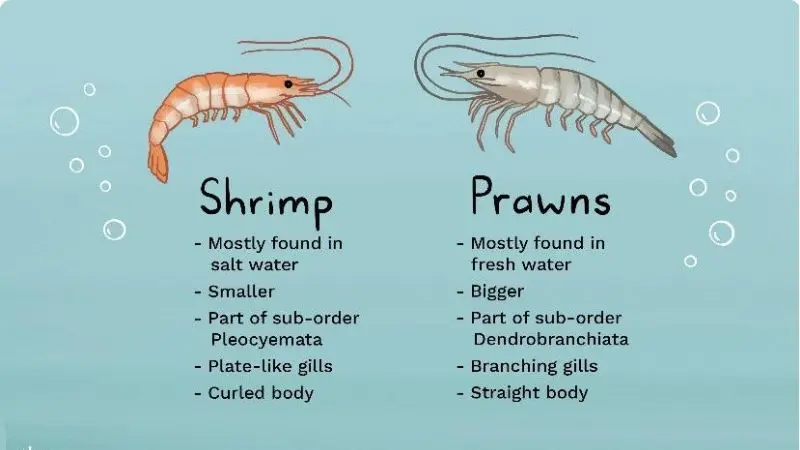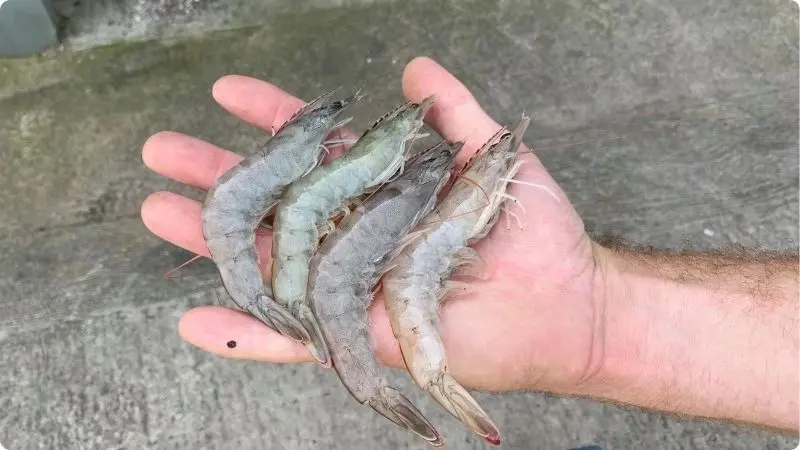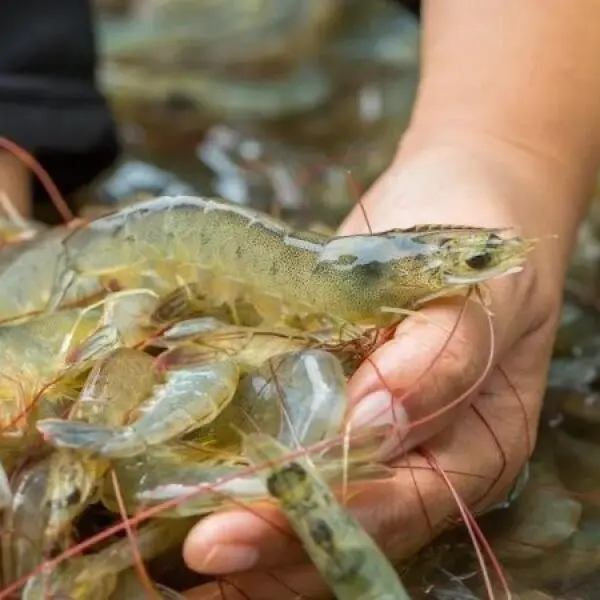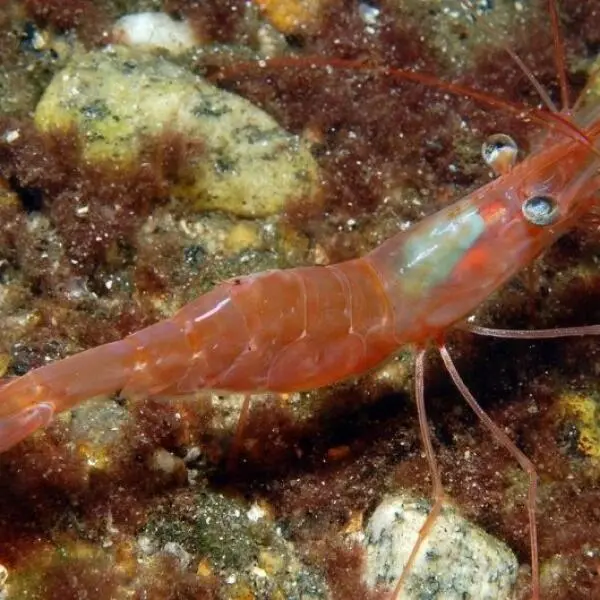
If you’ve ever encountered a seafood menu or a bustling fish market, you’ve likely seen the terms “shrimp” and “prawns” used interchangeably. While both are decapod crustaceans with 10 legs and a similar appearance, shrimp and prawns are distinct species with subtle differences. In this guide, we’ll explore what sets these two apart, answer whether shrimp and prawns taste the same, and provide tips for selecting the right crustacean for your dish.
Understanding the Basics of Shrimp and Prawns
When you visit a seafood market or browse a restaurant menu, you might wonder about the difference between shrimp and prawns. At first glance, these aquatic creatures appear remarkably similar, sharing characteristics such as their segmented bodies protected by hard exoskeletons and their habitat in aquatic environments. However, these crustaceans belong to distinct biological classifications that set them apart in subtle yet significant ways.
Shrimp belong to the suborder Pleocyemata, while prawns are classified under Dendrobranchiata. This scientific distinction might seem academic, but it underlies important differences in their anatomy and lifecycle. Regional terminology often complicates matters further, with the term "prawn" being more common in British and Irish cuisine, while "shrimp" dominates American seafood vocabulary, regardless of the actual species being discussed.

Understanding the Basics of Shrimp and Prawns
Key Anatomical Differences Between Shrimp and Prawns
The anatomical differences between these crustaceans are subtle but distinctive. Shrimp possess a unique body structure where their side plates overlap in a specific pattern – the second segment overlaps both the first and third segments. This characteristic arrangement allows shrimp to achieve their familiar curved or "C" shape when cooked. In contrast, prawns maintain a straighter posture due to their tile-like overlapping plates.
Their gill structures also differ significantly. Shrimp feature lamellar (plate-like) gills, while prawns possess branching gills. When examining their appendages, you'll notice that shrimp typically have shorter legs and claws on two pairs of legs, with their largest pincers located at the front. Prawns, however, display longer legs and possess claws on three pairs of legs, with their largest pincers found on the second set.

Key Anatomical Differences Between Shrimp and Prawns
Living Spaces for Shrimp and Prawns in Nature
The natural habitats of shrimp and prawns offer another point of distinction. Shrimp predominantly inhabit saltwater environments, although some species have adapted to freshwater conditions. Water temperature significantly influences their size, with warm-water shrimp generally growing larger than their cold-water counterparts.
Prawns, conversely, show a stronger preference for freshwater habitats, though some species thrive in saltwater environments. Freshwater prawns typically develop into larger, meatier specimens, making them particularly valued in certain culinary applications.
Reproduction Patterns and Life Cycles of Shrimp and Prawns
The reproductive strategies of shrimp and prawns differ notably. Shrimp demonstrate parental care by carrying their fertilized eggs beneath their bodies until hatching occurs. This behavior ensures higher survival rates for their offspring. Prawns take a different approach, releasing their fertilized eggs directly into the water, where they develop independently.
Culinary Applications and Flavor Profiles for Shrimp and Prawns
Despite their biological differences, shrimp and prawns share remarkably similar flavor profiles, characterized by a mild, sweet taste that makes them interchangeable in many recipes. However, subtle variations in texture and sweetness can influence their optimal culinary uses.
Shrimp typically offer a firmer texture, making them excellent candidates for grilling or stir-frying. Their ability to maintain structural integrity under high heat makes them perfect for dishes like grilled shrimp tacos or honey walnut shrimp. Prawns, with their slightly sweeter flesh and more delicate texture, excel in preparations that showcase their natural flavors, such as steaming or gentle sautéing in light sauces.

Culinary Applications and Flavor Profiles for Shrimp and Prawns
How to Cook Shrimp and Prawns in Various Styles
Both crustaceans excel in a variety of culinary uses. Here are some standout recipes that showcase their versatility:
Grilled Shrimp Tacos combine jumbo shrimp marinated in zesty chili-lime seasoning, creating a perfect balance of smoky and citrus flavors. Lemon Garlic Butter Prawns offer a classic preparation where the natural sweetness of prawns complements the rich butter and bright lemon notes. The beloved Honey Walnut Shrimp features crispy shrimp tossed in a honey glaze, while Cajun Shrimp Orzo presents a satisfying one-pot meal combining seasoned shrimp with smoky spices and pasta.
For those interested in international cuisine, Ginataan na Sugpo, a Filipino delicacy, demonstrates how prawns can be transformed in a coconut milk-based sauce with aromatic spices.
The Nutritional Upsides and Health Downsides
Both shrimp and prawns offer impressive nutritional profiles, making them excellent choices for health-conscious consumers. A standard 3-ounce serving provides approximately 20 grams of protein while containing only 84 calories and less than 1 gram of fat. They also serve as valuable sources of omega-3 fatty acids, which support heart health.
Selecting and Purchasing Tips
When choosing between shrimp and prawns, consider size classifications, which are typically indicated by the number of pieces per pound. For example, U/10 designation indicates extra-large specimens, while 21/25 refers to jumbo size. While fresh products are ideal, high-quality frozen options processed using IQF (Individually Quick Frozen) technology often provide better value and consistency.
Sustainability concerns should also factor into purchasing decisions. Wild-caught U.S. varieties generally offer more sustainable options compared to imported farmed products. Looking for certifications from organizations like the Marine Stewardship Council can help ensure responsible consumption.
The Global Reach and Cultural Impact of Shrimp and Prawn
The impact of shrimp and prawns extends beyond the kitchen. In Australia, prawns hold cultural significance, immortalized in the phrase "throw another prawn on the barbie." The United States leads global consumption, with imported products comprising 90% of the supply. Some species, like spot prawns, display fascinating biological adaptations, including the ability to change sex during their lifetime.
Fun Facts About Shrimp and Prawns
- Regional Terminology: In Australia, prawns dominate menus and are featured in the iconic phrase “throw another prawn on the barbie.”
- Global Consumption: Shrimp and prawns are the most consumed seafood in the U.S., with imports making up 90% of the supply.
- Biological Wonders: Some species of prawns, like spot prawns, change sex during their lifetimes, starting as males and transitioning to females.
Conclusion
While shrimp and prawns share many similarities, their differences in anatomy, habitat, and reproduction set them apart. Understanding these distinctions can help you make informed choices when shopping, cooking, or discussing seafood. Whether you’re preparing a quick shrimp stir-fry or a decadent prawn curry, these crustaceans bring unparalleled versatility and flavor to the table.
By focusing on sustainability and freshness, you can enjoy shrimp and prawns responsibly while savoring their mild, sweet taste. So, the next time you encounter these seafood staples, you’ll know exactly what sets them apart—and how to make the most of their delicious potential.
Related Articles
Want to learn more about type of shrimp? From ocean to plate
Shrimp is a versatile and beloved seafood staple, but few realize the incredible variety of shrimp ...
Tired of pool scale? What causes white spots in your pool?
Pool scale is a common issue for pool owners, causing unsightly deposits and potentially damaging ...
Ever Wondered How Algae and Moss Differ?
Algae and moss are often mistaken for one another due to their green appearance and similar growth ...
What is White Shrimp? A Deep Dive into This Iconic Seafood
White shrimp (Litopenaeus setiferus) stands as one of the most commercially significant seafood ...
All About Pink Shrimp: The Fascinating World of Pink Shrimp
Pink shrimp (Farfantepenaeus duorarum) stands as one of the most valuable and fascinating marine ...
How big can tiger shrimp grow?
Tiger shrimp , including the highly sought-after black tiger shrimp, is a lucrative species in the ...






